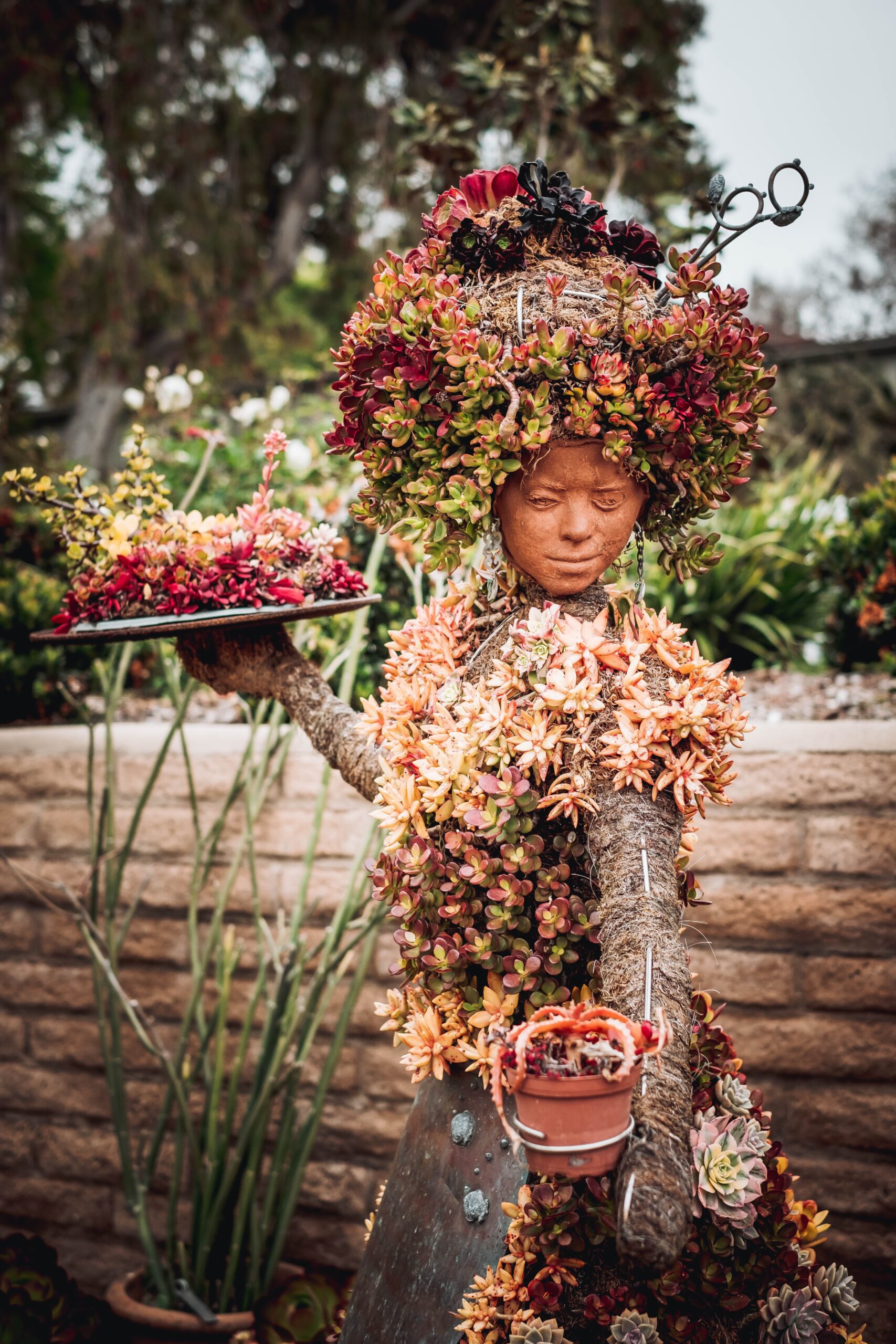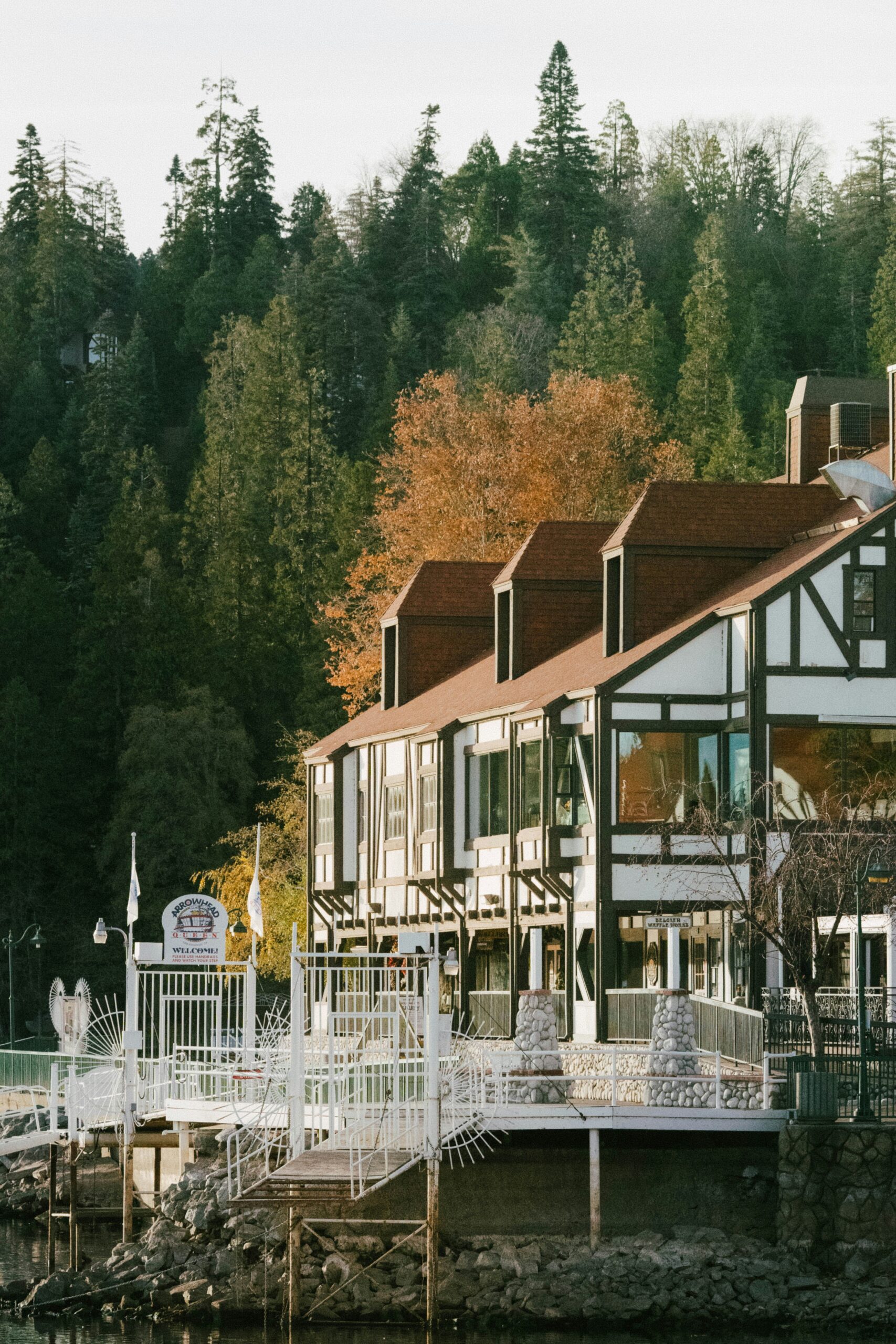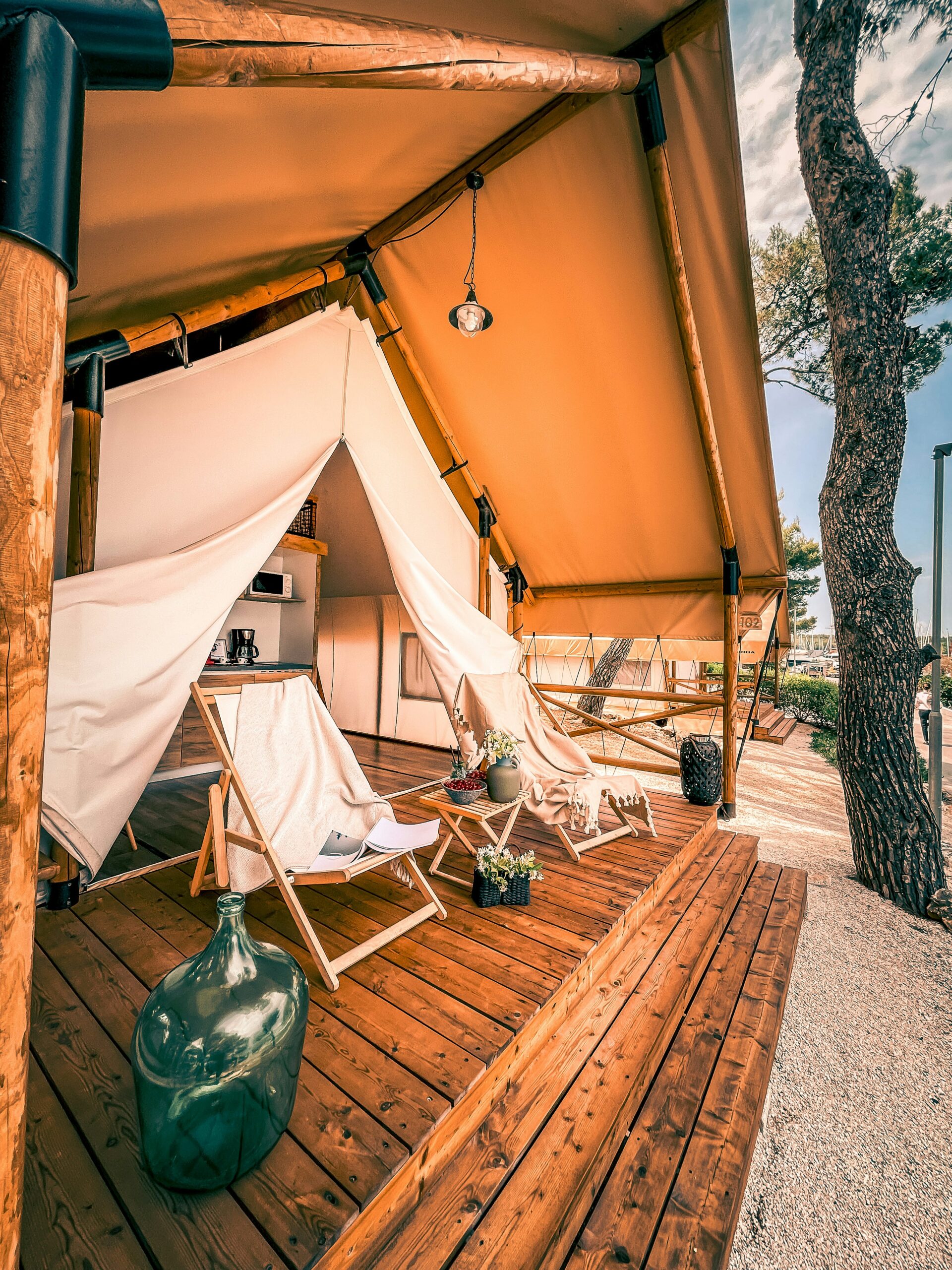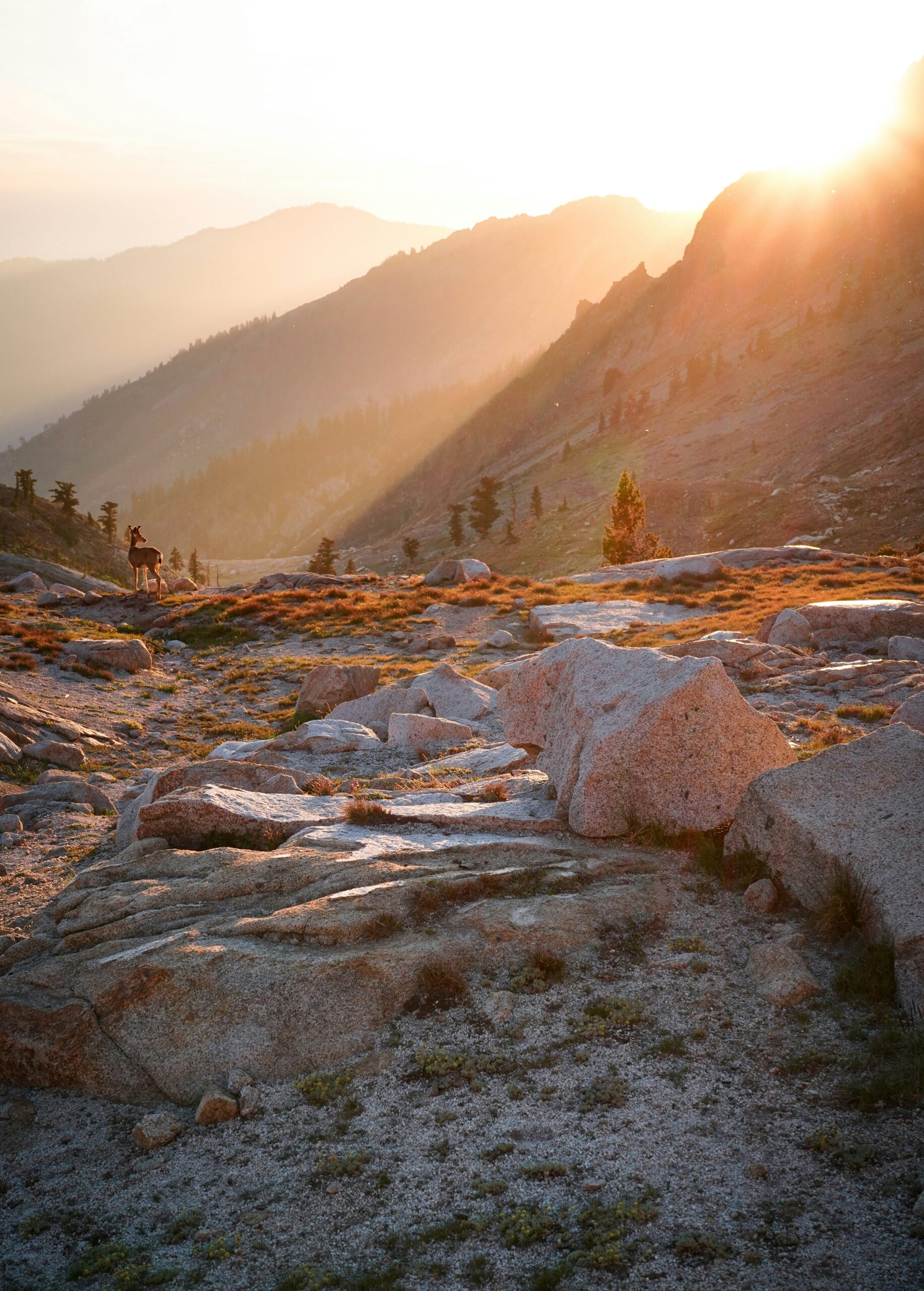Botanical Gardens in California: Exploring the State’s Natural Beauty
California is a state that is home to a diverse range of flora and fauna. From the towering redwoods of Northern California to the sunny beaches of Southern California, the state has a lot to offer nature enthusiasts. One of the best ways to experience the beauty of California's flora is by visiting one of the many botanical gardens in California.
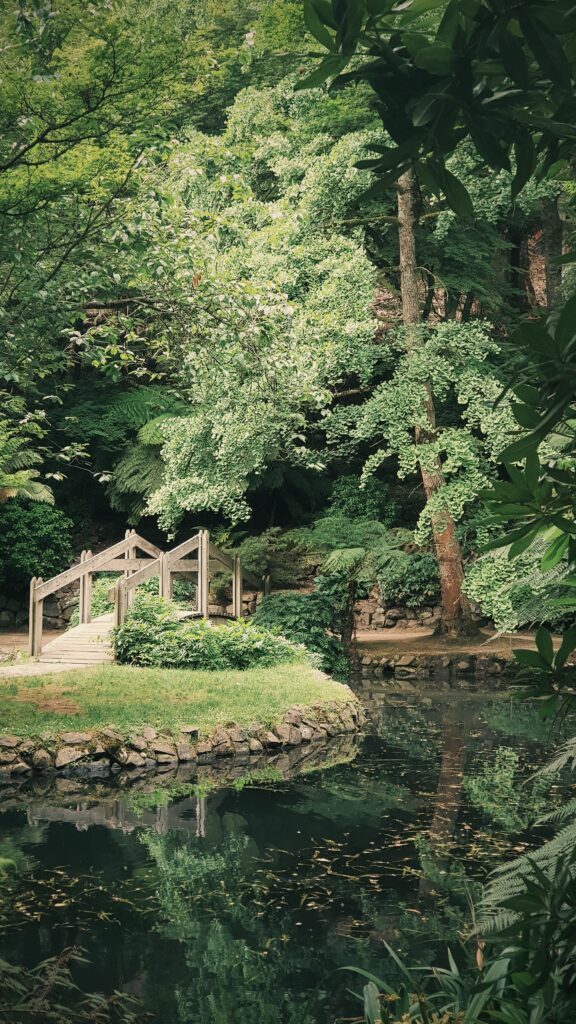
Botanical gardens are curated spaces where you can explore and learn about different types of plants. They offer a chance to see plants from around the world in one place, as well as learn about their unique characteristics and uses. California is home to a number of botanical gardens that showcase the state's native plants as well as plants from other regions. Whether you are a plant enthusiast or just looking for a beautiful place to spend an afternoon, California's botanical gardens have something for everyone.
Botanical Gardens in California: Exploring the State's Natural Beauty
Overview of Botanical Gardens in California
California is home to a variety of botanical gardens that showcase the state's diverse flora. From rare and native plants to endangered species, these gardens offer a glimpse into the state's rich natural heritage. Here is an overview of some of the key features of botanical gardens in California.
Historical Significance
Many of California's botanical gardens have a rich history that dates back to the 19th century. For example, the UC Botanical Garden at Berkeley was established in 1890 and is one of the oldest in the state. These gardens have played an important role in the development of California's agricultural industry and have helped to preserve rare and endangered plant species.
Diversity of Plant Species
California's botanical gardens are home to a diverse range of plant species, including both native and exotic plants. The gardens often have specialized collections that focus on specific types of plants, such as succulents or orchids. For example, the San Francisco Botanical Garden has a collection of more than 8,000 plants from around the world, including rare and endangered species.
Conservation Efforts
Many of California's botanical gardens are involved in conservation efforts to protect endangered plant species. For example, the Santa Barbara Botanic Garden has a program dedicated to the conservation of California's native plants. The gardens often work with government agencies and nonprofit organizations to protect these plants and their habitats.
In summary, California's botanical gardens are a treasure trove of rare and native plants, and they play an important role in the conservation of the state's natural heritage. Whether you are a plant enthusiast or just looking for a peaceful place to relax, a visit to one of these gardens is sure to be a memorable experience.
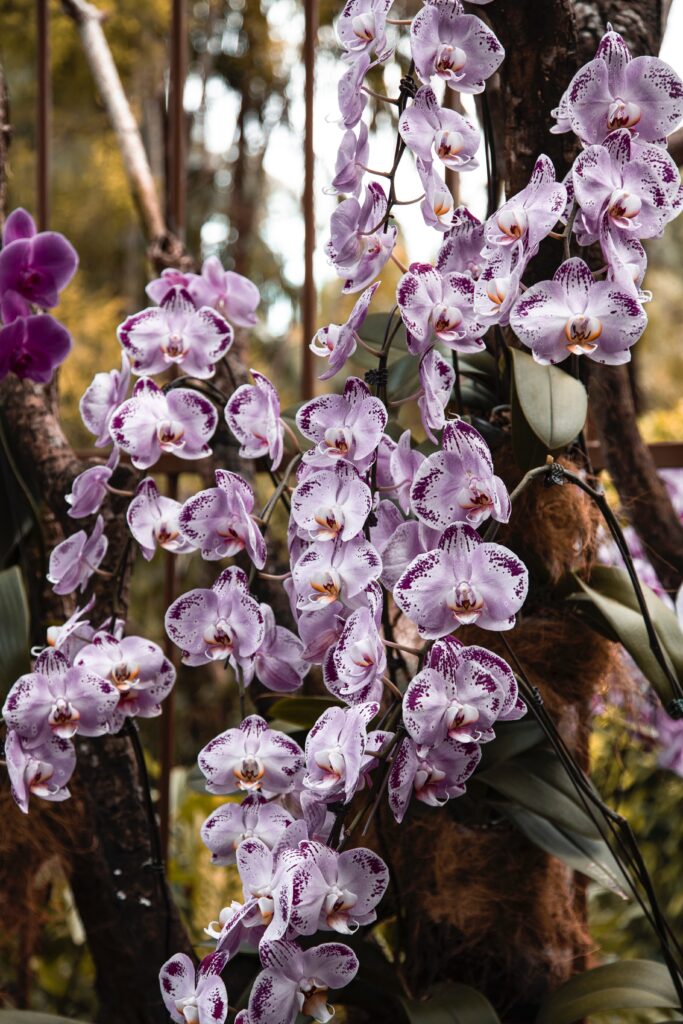
Famous Botanical Gardens in California
If you're looking for a beautiful and serene place to spend some time in California, you can't go wrong with a visit to one of the state's many botanical gardens. Here are some of the most famous botanical gardens in California that you should definitely check out:
The Huntington
The Huntington Library, Art Museum, and Botanical Gardens in Pasadena is one of the most famous botanical gardens in California. The 120-acre garden features a variety of themed gardens, including a Japanese garden, a desert garden, and a rose garden. The Huntington also has an extensive library and art collection that visitors can explore.
San Francisco Botanical Garden
The San Francisco Botanical Garden is located in Golden Gate Park and covers 55 acres. The garden features over 8,000 different plant species from around the world, including rare and endangered species. The garden is divided into several different sections, including a redwood grove, a succulent garden, and a cloud forest.
San Diego Botanic Garden
The San Diego Botanic Garden in Encinitas covers 37 acres and features over 4,000 different plant species from around the world. The garden is divided into several different sections, including a tropical rainforest, a desert garden, and a bamboo grove. The San Diego Botanic Garden also has several walking trails that visitors can explore.
Santa Barbara Botanic Garden
The Santa Barbara Botanic Garden covers 78 acres and features over 1,000 different plant species from California and around the world. The garden is divided into several different sections, including a redwood forest, a desert garden, and a meadow. The Santa Barbara Botanic Garden also has several hiking trails that visitors can explore.
University of California Botanical Garden at Berkeley
The University of California Botanical Garden at Berkeley covers 34 acres and features over 13,000 different plant species from around the world. The garden is divided into several different sections, including a Chinese garden, a Mediterranean garden, and a California native plant garden. The University of California Botanical Garden at Berkeley also has several walking trails that visitors can explore.
Overall, these botanical gardens are great places to explore the diverse plant life of California. Whether you're a nature enthusiast or just looking for a peaceful place to relax, you're sure to enjoy your visit to one of these botanical gardens.
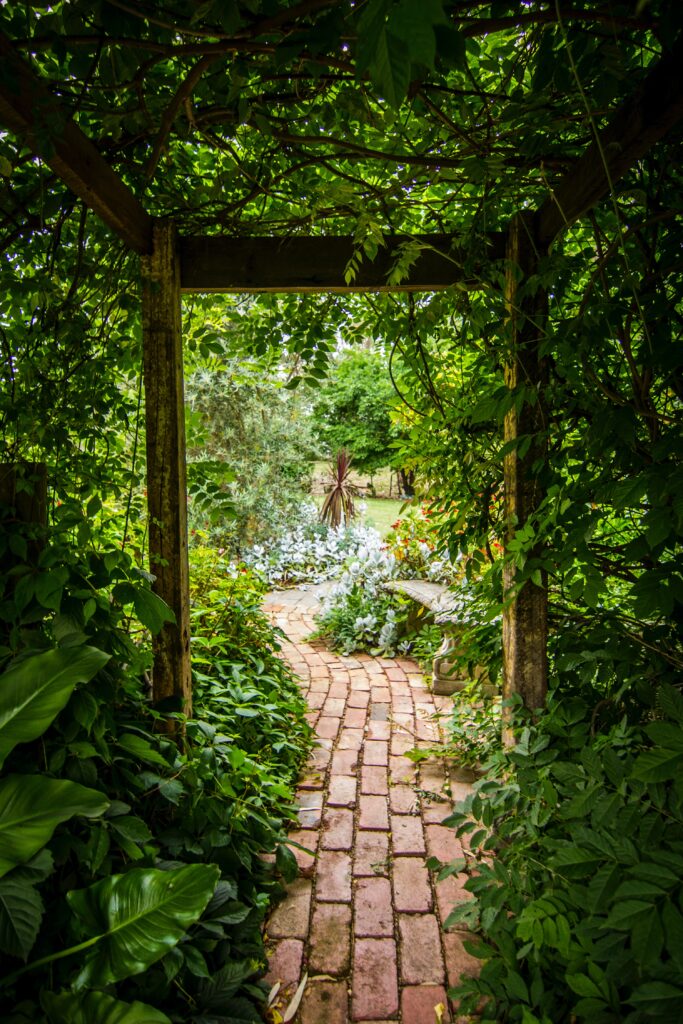
Unique Features of California Botanical Gardens
If you are a nature lover, California's botanical gardens are a must-visit. These gardens offer a wide variety of plant collections, diverse areas of focus, and serene environments where you can enjoy the plants, trees, and flowers. Here are some unique features of California Botanical Gardens that you should not miss.
Themed Gardens
Most botanical gardens in California have themed gardens that showcase the beauty and diversity of plants from around the world. For example, The Huntington Botanical Gardens in San Marino has a Japanese Garden that features a moon bridge, a teahouse, and a koi pond. The San Francisco Botanical Garden has a Garden of Fragrance where you can enjoy the aroma of different plants, including lavender, sage, and rosemary. The South Coast Botanic Garden in Palos Verdes has a Mediterranean Garden that features olive trees, lavender, and succulents.
Desert and Succulent Collections
California is known for its deserts, and many botanical gardens in the state have desert and succulent collections. The Moorten Botanical Garden in Palm Springs has over 3,000 cacti and other desert plants. The Ruth Bancroft Garden in Walnut Creek has a large collection of succulents from around the world. You can also visit the Huntington Botanical Gardens' Desert Garden, which has one of the largest collections of cacti and other succulent plants in the world.
Japanese and Chinese Gardens
Japanese and Chinese gardens are popular in California's botanical gardens. The Japanese Tea Garden in Golden Gate Park, San Francisco, is a must-visit. It features a five-story pagoda, a tea house, and a koi pond. The Chinese Garden at The Huntington Botanical Gardens is another must-see. It features a lake, a pavilion, and a bonsai collection.
Ancient Forests and Redwood Groves
California's botanical gardens also have ancient forests and redwood groves. The Redwood Grove at the UC Botanical Garden at Berkeley is a beautiful place to visit. It features a 150-foot coast redwood tree, as well as other redwoods and ferns. The Fern Canyon Trail at the Mendocino Coast Botanical Gardens is another great place to explore. It features a canyon filled with ferns, mosses, and other plants.
In addition to the above features, many botanical gardens in California also have bamboo gardens, Mexican gardens, tropical plants, and more. Each garden has its unique features, so make sure to visit as many as you can to experience the beauty of California's botanical gardens.
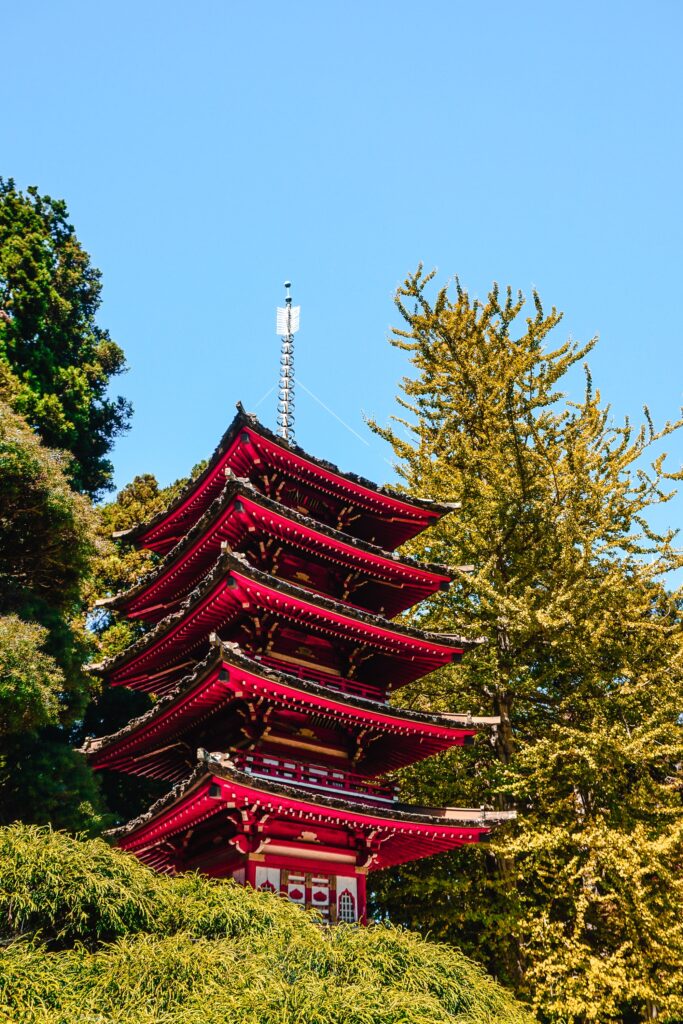
Educational Programs and Events
Botanical gardens in California offer a variety of educational programs and events that will enrich your knowledge and experience with plants. Whether you are a nature enthusiast, a student, or just looking for a fun activity with your family, there is something for everyone.
Guided Tours and Walks
One of the best ways to learn about the plants in a botanical garden is through guided tours and walks. Trained docents will take you on a journey through the garden, pointing out unique features and sharing interesting facts about the plants. You will learn about the different ecosystems in California and how plants have adapted to survive in each one. Some botanical gardens even offer specialized tours, such as bird watching tours or tours focused on medicinal plants.
Workshops and Classes
Botanical gardens also offer a variety of workshops and classes to educate the public on different aspects of botany. These classes cover topics such as plant propagation, plant identification, and sustainable gardening practices. Workshops are usually hands-on and provide participants with the opportunity to learn by doing. Some botanical gardens also offer certificate programs for those who want to deepen their knowledge of botany.
Seasonal and Cultural Events
In addition to educational programs, botanical gardens in California also host seasonal and cultural events throughout the year. These events are a great way to experience the garden in a different way and learn about different cultures. For example, some botanical gardens have a Day of the Dead celebration, where visitors can learn about the Mexican holiday and its traditions. Other gardens have a holiday lights display, where visitors can enjoy the garden at night and see the plants in a different light.
Botanical gardens in California are a great resource for education and fun. With guided tours, workshops, and seasonal events, there is always something new to learn and experience. So, bring your family and friends and explore the beauty of California's native flora.
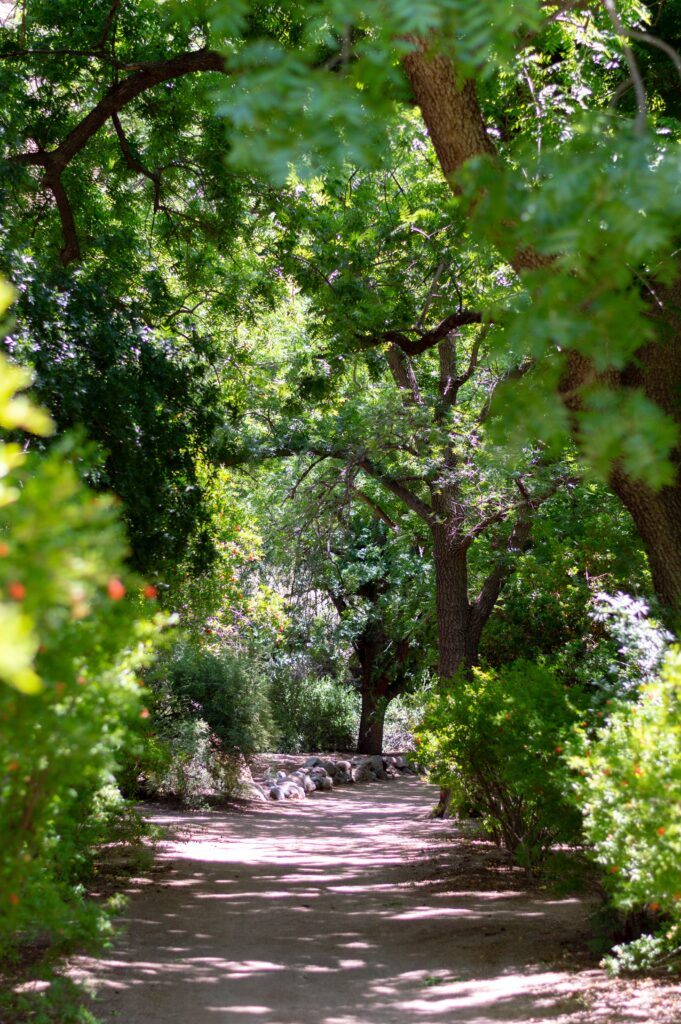
Visitor Information
Admission and Reservations
Visiting a botanical garden in California is an excellent way to spend an afternoon. Admission fees vary depending on the garden you choose to visit, but most gardens offer discounts for children, seniors, and students. Some gardens, such as the San Francisco Botanical Garden, offer free admission to residents of the city on certain days. You can check the website of the garden you plan to visit for admission prices and discounts.
It is a good idea to make reservations before you visit a botanical garden in California. Some gardens, such as The Huntington Library, Art Museum, and Botanical Gardens, require reservations for all visitors, while others, like the Mendocino Coast Botanical Gardens, recommend it. Reservations can be made online, and they allow you to skip the line and enter the garden immediately upon arrival.
Operating Hours and Best Times to Visit
Botanical gardens in California are typically open year-round, but operating hours may vary depending on the season. Most gardens open early in the morning and close in the evening, but some gardens, such as The Huntington Library, Art Museum, and Botanical Gardens, close earlier on Mondays. You can check the website of the garden you plan to visit for operating hours.
The best time to visit a botanical garden in California is in the morning or late afternoon when the weather is cooler. This way, you can avoid the midday heat and crowds. If you plan to visit during the weekend, arrive early to avoid the crowds.
Amenities and Accessibility
Most botanical gardens in California offer amenities such as benches, restrooms, and drinking fountains. Some gardens, such as the San Francisco Botanical Garden, have cafes where you can grab a bite to eat. If you plan to bring a picnic, check the garden's website for its picnic policy.
Botanical gardens in California are generally accessible to the public, but some gardens have areas that are not wheelchair accessible. Check the garden's website for accessibility information before you visit. If you have any specific needs, such as a sign language interpreter, contact the garden in advance to make arrangements.
Conservation and Research Initiatives
Botanical gardens in California are not only dedicated to showcasing the beauty of nature but also to preserving it. They have initiated several conservation and research initiatives to protect the state's unique flora and fauna.
Native Plant Preservation
One of the primary goals of botanical gardens in California is to preserve the state's native plants. Many of these plants are endangered due to factors like habitat loss, invasive species, and climate change. Botanical gardens are working to protect these plants through seed banks, living collections, and habitat restoration projects.
For example, the California Botanic Garden has a seed conservation program that aims to collect and store seeds from California native plants. They also have a living collection of over 70,000 plants, including more than 2,000 rare and endangered species.
Endangered Species Protection
In addition to preserving native plants, botanical gardens in California are also working to protect endangered species. They collaborate with government agencies, conservation organizations, and scientific institutions to develop and implement conservation strategies.
For instance, the UC Botanical Garden has several conservation projects focused on California native plants, including the endangered Eschscholzia californica. They also have partnerships with organizations like the California Native Plant Society to protect endangered species and their habitats.
Collaborations with Scientific Institutions
Botanical gardens in California also collaborate with scientific institutions to conduct research on plant conservation and ecology. They provide opportunities for students and researchers to study plant biology, ecology, and conservation.
For example, the San Diego Botanic Garden has a research program that focuses on plant conservation and ecology. They collaborate with academic institutions, botanic gardens, and other organizations to improve the conservation and use of crops and their wild relatives.
In conclusion, botanical gardens in California are not only beautiful places to visit but also play a vital role in preserving the state's unique flora and fauna. Through their conservation and research initiatives, they educate the public about the importance of protecting California native plants and collaborate with the scientific community to develop effective conservation strategies.
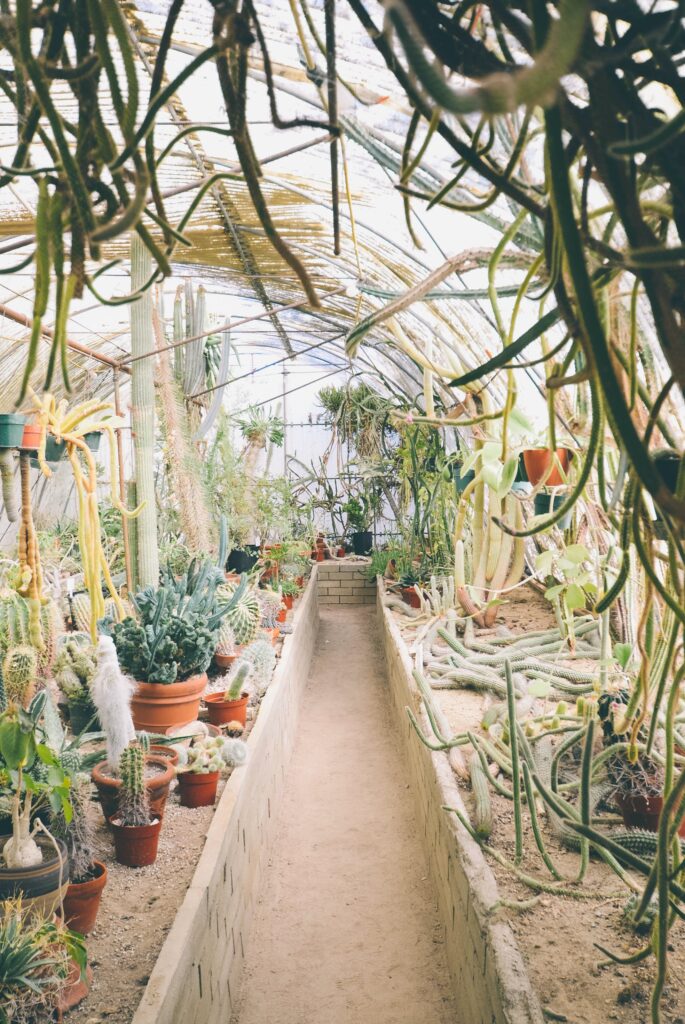
Recreation and Leisure Activities
Family-Friendly Areas
California's botanical gardens offer a wide range of activities for families with children. Many gardens have special areas designed specifically for children, such as interactive exhibits, educational programs, and play areas. For example, the San Francisco Botanical Garden has a Children's Garden, which features a variety of hands-on activities and a miniature garden railway. The Huntington Library, Art Museum, and Botanical Gardens in San Marino has a Children's Garden with a variety of themed areas, including a bamboo forest and a topiary garden.
Peaceful Retreats and Meditation Spaces
Botanical gardens are also great places to find peace and quiet. Many gardens have benches and other seating areas where you can sit and enjoy the scenery. Some gardens even have designated meditation spaces, such as the Japanese Garden at the Huntington Library, Art Museum, and Botanical Gardens. These spaces are designed to help you relax and unwind, and they often feature calming water features and lush greenery.
Whether you're looking for a fun family outing or a peaceful retreat, California's botanical gardens have something for everyone. So why not take a break from the hustle and bustle of daily life and spend some time enjoying the beauty of nature?
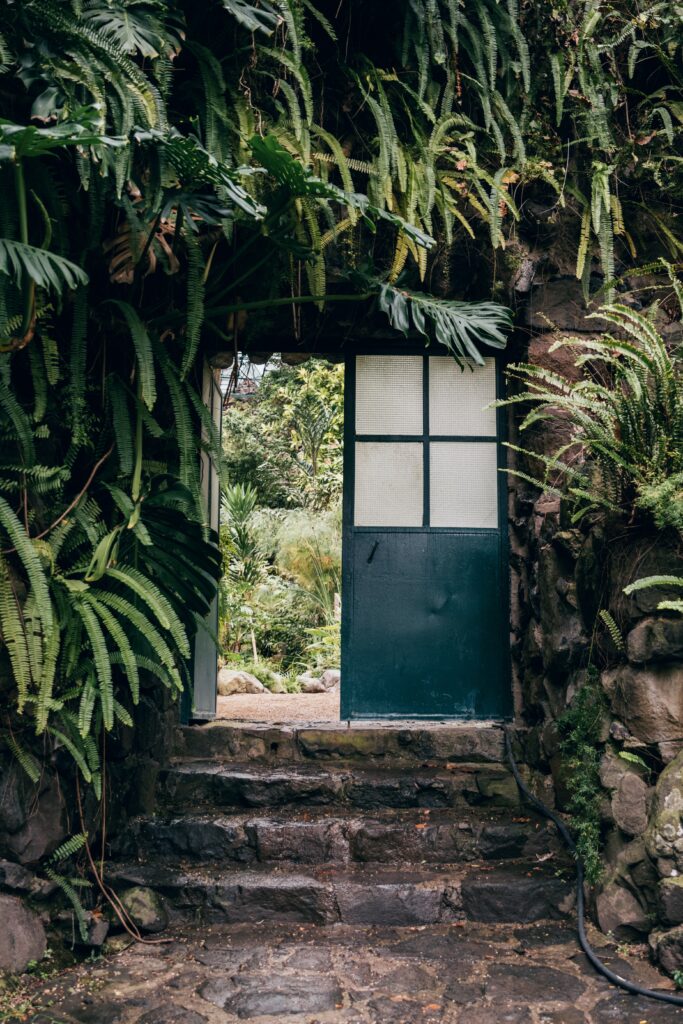
Botanical Art and Culture
Visiting botanical gardens in California is an excellent way to experience the beauty of nature and learn about various plant species. However, these gardens also provide an opportunity for visitors to immerse themselves in art and culture.
Sculpture Gardens and Art Exhibits
Many botanical gardens in California feature sculpture gardens and art exhibits. For example, the Huntington Library and Botanical Gardens in San Marino have a vast collection of outdoor sculptures, including the famous “The Blue Boy” statue. The garden also hosts temporary art exhibits throughout the year, featuring works of local and international artists.
Literary and Historical Themes
Some botanical gardens in California are designed around literary and historical themes. The Shakespeare Garden at the Golden Gate Park in San Francisco, for example, features plants that are mentioned in Shakespeare's plays and sonnets. The garden also has a bronze statue of Shakespeare and a replica of the famous Anne Hathaway Cottage.
The Japanese Friendship Garden in San Diego is another example of a garden with a historical theme. The garden is designed to showcase the traditional Japanese garden style and features a Tea House and a Moon Bridge.
In conclusion, when you visit a botanical garden in California, take the time to explore the art and culture that is on display. From sculpture gardens to literary and historical themes, these gardens offer a unique and enriching experience for visitors of all ages.
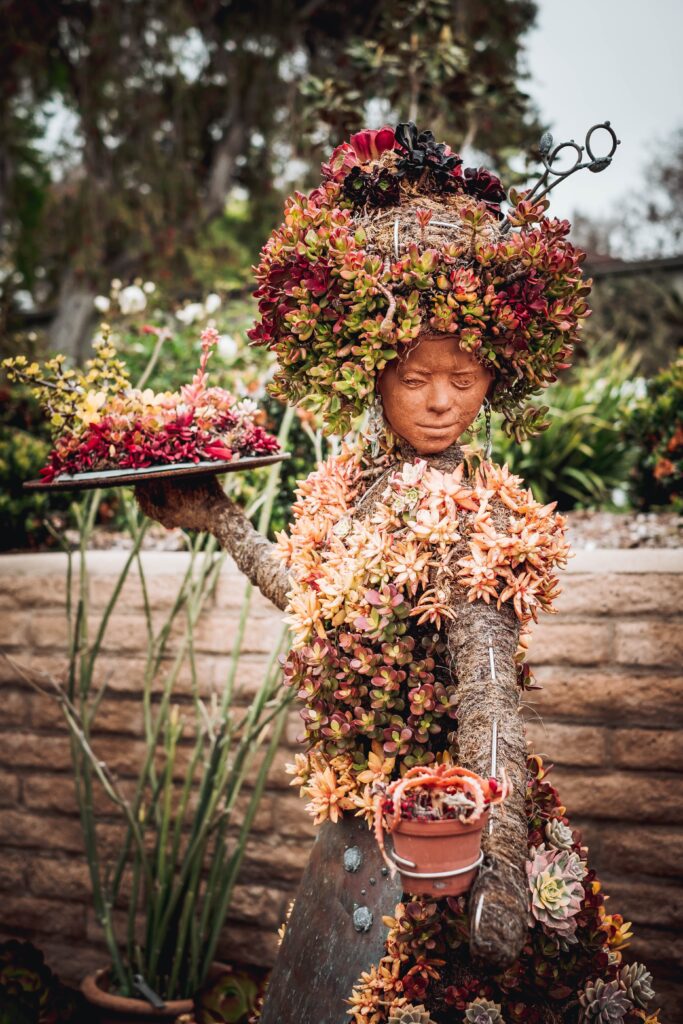
Garden Landscapes and Design
California's botanical gardens are renowned for their stunning landscapes and designs. With a variety of gardens to explore, you will find water features, ornamental and flower gardens, arboretums, and tree collections that are sure to delight.
Water Features and Aquatic Plants
Many of California's botanical gardens feature water features such as lakes and koi ponds. These water features are often surrounded by a variety of aquatic plants, such as water lilies and lotuses, which create a peaceful and serene atmosphere. You can observe various species of birds and wildlife that are attracted to the water. The Huntington Botanical Gardens in San Marino, for example, has a Japanese Garden that includes a large koi pond surrounded by beautiful magnolias and camellias.
Ornamental and Flower Gardens
California's botanical gardens are known for their stunning ornamental and flower gardens. These gardens are designed to showcase a variety of flowers and plants, including orchids, rhododendrons, and other exotic species. The San Francisco Conservatory of Flowers, for example, has a Victorian-style greenhouse that houses a variety of tropical plants and flowers. The Mendocino Coast Botanical Gardens is another great example, with its colorful and diverse collection of flowers that bloom year-round.
Arboretums and Tree Collections
Arboretums and tree collections are another popular feature of California's botanical gardens. These gardens are designed to showcase a variety of trees, including rare and exotic species. The UC Botanical Garden at Berkeley, for example, has a collection of over 12,000 different types of plants, including a variety of trees such as the Coast Redwood and the Dawn Redwood. The Grace Kallam Perennial Garden at The Arboretum in Los Angeles, on the other hand, features a variety of shrubs and perennials that are native to California.
In conclusion, California's botanical gardens offer a variety of garden landscapes and designs that are sure to delight visitors. Whether you are interested in water features and aquatic plants, ornamental and flower gardens, or arboretums and tree collections, you will find something to enjoy in California's botanical gardens.
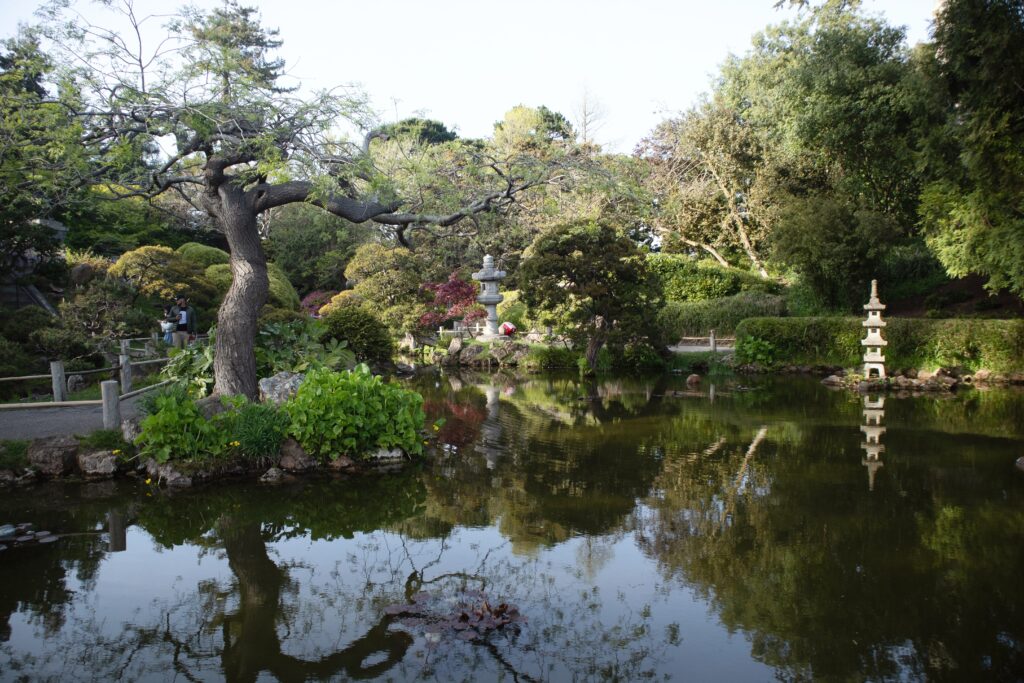
Regional Highlights
California is home to a diverse range of plant species, and each region boasts unique botanical gardens that showcase the beauty of the state's flora. In this section, we'll highlight some of the must-visit botanical gardens in Northern and Southern California.
Northern California Gems
If you find yourself in Northern California, be sure to visit the Mendocino Coast Botanical Gardens in Fort Bragg. This 47-acre garden is located on a bluff overlooking the Pacific Ocean and features a wide variety of plants, including rhododendrons, dahlias, and fuchsias. Take a stroll through the gardens and enjoy the stunning ocean views.
Another must-visit garden in Northern California is the San Francisco Botanical Garden in Golden Gate Park. This 55-acre garden features over 8,000 different plant species from around the world. Be sure to check out the Garden of Fragrance, which features plants with a variety of scents, including lavender and rosemary.
Southern California Favorites
In Southern California, the Descanso Gardens in the San Gabriel Mountains are a must-visit. This 160-acre garden features a variety of plant collections, including camellias, roses, and lilacs. Take a walk through the Oak Woodland, which features a variety of native California trees.
Another favorite among Southern California locals is the South Coast Botanic Garden in Palos Verdes. This 87-acre garden features over 2,500 different plant species, including a variety of succulents and cacti. Be sure to check out the Garden of the Senses, which features plants with a variety of textures and scents.
No trip to Southern California would be complete without a visit to the Moorten Botanical Garden in Palm Springs. This garden features over 3,000 different cacti and succulents and is a favorite among photographers. Be sure to check out the Cactarium, which features a variety of rare cacti.
Whether you're exploring the Santa Ynez Mountains or visiting one of California's national parks, there's no shortage of beautiful botanical gardens to explore. One of the most popular is the California Botanic Garden (CalBG) in Claremont, which spans 86 acres and features a variety of native California plants.
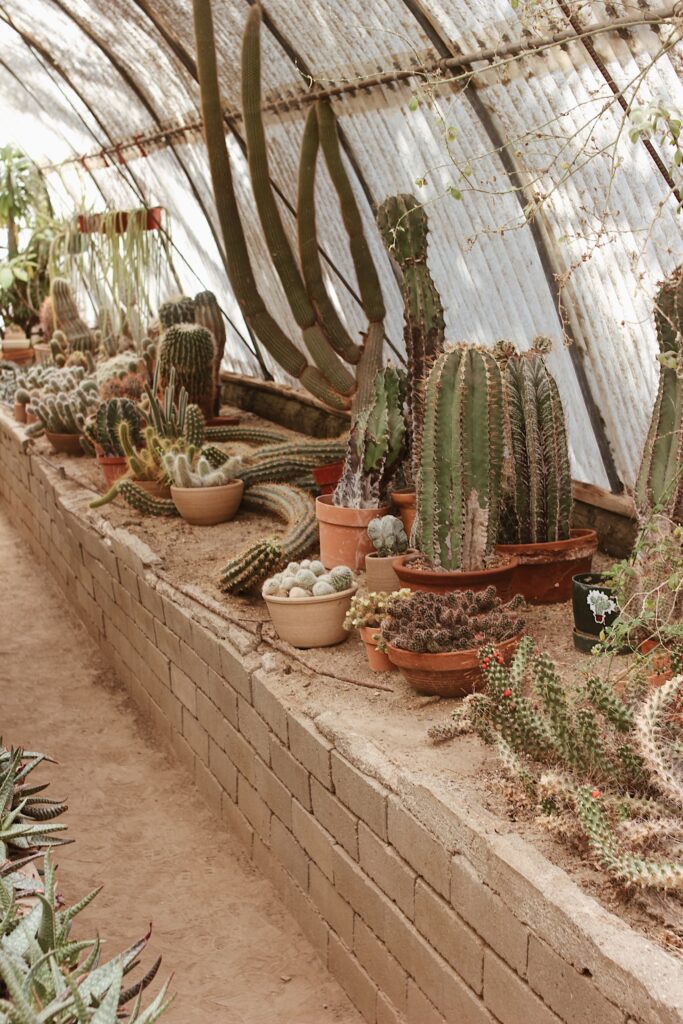
Related Post:
- California Botanic Garden: A Stunning Nature Destination in Southern California
- Descanso Gardens: A Tranquil Retreat Amidst Blooming Wonders
Sustainability and Eco-Friendly Practices
If you are interested in sustainable practices and eco-friendliness, you will be happy to know that many botanical gardens in California are committed to reducing their environmental impact. Here are some of the ways in which they achieve this:
Water Conservation Methods
Water conservation is a top priority for many botanical gardens in California, as the state is prone to droughts. To reduce water usage, many gardens have implemented a range of water conservation methods. For example, some gardens use drip irrigation systems, which deliver water directly to the roots of plants, minimizing water waste. Others collect rainwater and use it to water the gardens. Some gardens also use greywater, which is wastewater from sinks, showers, and washing machines, to irrigate plants.
Sustainable Horticulture
Sustainable horticulture is another important aspect of eco-friendliness in botanical gardens. This involves using practices that are environmentally friendly and socially responsible. For example, many gardens use organic fertilizers and pesticides, which are less harmful to the environment than traditional chemicals. Some gardens also use companion planting, which involves planting different species of plants together to create a mutually beneficial environment.
In addition to sustainable horticulture practices, many botanical gardens in California are also involved in conservation efforts. For example, some gardens have programs to conserve endangered plant species, while others work to protect pollinators such as bees and butterflies. These conservation efforts are important for maintaining biodiversity and preserving the natural beauty of California's flora.
Overall, if you are interested in sustainable practices and eco-friendliness, you will be pleased to know that many botanical gardens in California are committed to reducing their environmental impact. By implementing water conservation methods and sustainable horticulture practices, these gardens are doing their part to protect the environment and preserve California's natural beauty.
Supporting Botanical Gardens
Botanical Gardens in California are not only a place to enjoy beautiful scenery and learn about plants but also a living museum that requires ongoing support from the community. There are several ways you can contribute to the maintenance and growth of these gardens.
Membership and Donations
One of the most straightforward ways to support botanical gardens is by becoming a member or making a donation. Most gardens offer different membership levels, which come with various benefits such as free admission, discounts on events, and access to exclusive areas. By becoming a member, you can enjoy the gardens year-round while supporting their mission.
Donations are also a crucial source of funding for botanical gardens. You can make a one-time or recurring donation to help with the upkeep of the gardens and support their research and educational programs. Some gardens also have specific funds for conservation efforts, so you can contribute to a cause you care about.
Volunteer Opportunities
If you're looking for a more hands-on way to support botanical gardens, consider volunteering. Many gardens rely on volunteers to help with tasks such as planting, weeding, and leading tours. Volunteering is a great way to learn more about plants and gardening while giving back to the community.
Some gardens also have volunteer programs for specific interests, such as photography or horticulture. By volunteering, you can develop new skills and meet like-minded people who share your passion for plants.
In conclusion, supporting botanical gardens is essential to ensure that these living museums continue to thrive. Whether you become a member, make a donation, or volunteer your time, your contribution will make a significant impact.
Planning Your Visit
When planning your visit to a botanical garden in California, there are a few things you should keep in mind to ensure a fulfilling experience. Here are some tips to help you make the most out of your visit.
Maps and Directions
Before heading out to the garden, it's a good idea to check the location and get directions. Most botanical gardens have their own website where you can find maps and directions to the garden. You can also use online maps such as Google Maps to get directions.
Tips for a Fulfilling Experience
Here are some tips to help you have a fulfilling experience when visiting a botanical garden in California:
- Make a reservation: Some botanical gardens require reservations, especially during peak season. Check the garden's website for reservation information.
- Arrive early: Arriving early will give you more time to explore the garden and avoid crowds.
- Wear comfortable shoes: You'll be doing a lot of walking, so wear comfortable shoes.
- Bring water and snacks: Walking around the garden can be tiring, so bring water and snacks to keep you hydrated and energized.
- Check the weather: California weather can be unpredictable, so check the weather forecast before heading out to the garden.
- Follow the rules: Be sure to follow the garden's rules and regulations to ensure a safe and enjoyable experience for everyone.
- Parking: Most botanical gardens have their own parking lot or nearby parking options. Check the garden's website for parking information.
By following these tips, you'll be able to enjoy a fulfilling experience when visiting a botanical garden in California.
Garden Facilities and Venues
California's botanical gardens offer a variety of facilities and venues for visitors to enjoy. From event spaces for hire to educational and research facilities, there is something for everyone to explore.
Event Spaces for Hire
Many of California's botanical gardens offer event spaces for hire, making them ideal venues for weddings, corporate events, and other special occasions. The Conservatory of Flowers in San Francisco, for example, offers a stunning Victorian greenhouse as a venue for events. The greenhouse, which is over 140 years old, provides a unique and memorable setting for any event.
Other botanical gardens offer outdoor event spaces, such as the Tropical Rainforest at the Huntington Library and Botanical Gardens in San Marino. This lush and vibrant space is perfect for events such as cocktail receptions and wedding ceremonies.
Educational and Research Facilities
In addition to event spaces, many of California's botanical gardens offer educational and research facilities. These facilities provide visitors with the opportunity to learn about the plants and ecosystems of California, as well as participate in research projects.
The California Botanic Garden in Claremont, for example, offers a variety of educational programs for visitors of all ages. These programs include guided tours, workshops, and classes on topics such as gardening, plant identification, and conservation.
Research facilities are also available at many botanical gardens, such as the University of California Botanical Garden at Berkeley. This garden offers research opportunities for students and scholars, as well as resources for the public to learn about ongoing research projects.
Whether you are looking for a beautiful event venue or an educational experience, California's botanical gardens have something to offer.
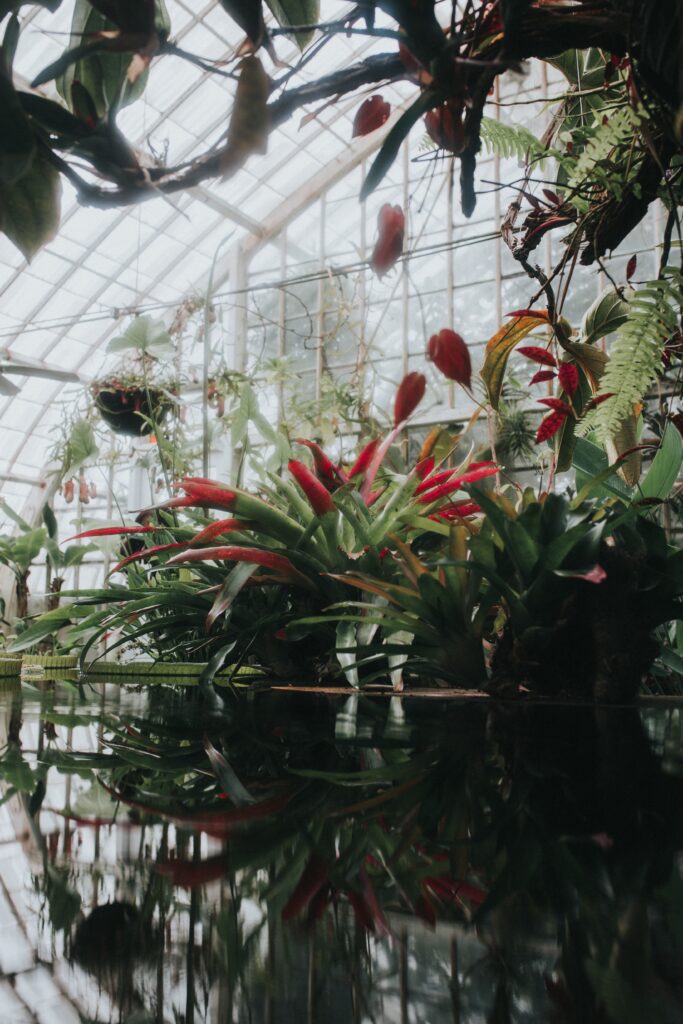
Wildlife and Natural Habitats
If you're a nature lover, you'll be pleased to know that California's botanical gardens are home to a variety of wildlife and natural habitats. Here are some of the highlights:
Bird Watching and Animal Encounters
Many botanical gardens in California have bird-watching areas, where you can spot a variety of feathered friends. The South Coast Botanic Garden in Palos Verdes, for example, has a bird sanctuary with over 200 species of birds. The Mendocino Coast Botanical Gardens also has several bird-watching areas, including a hummingbird garden.
In addition to birds, some botanical gardens also have animal encounters. The San Diego Botanic Garden, for example, has a children's garden with a petting zoo, where kids can interact with farm animals like goats and chickens.
Insect and Pollinator Gardens
Insects and pollinators play a crucial role in our ecosystem, and many botanical gardens in California have dedicated areas to showcase their importance. The California Botanic Garden in Claremont has a pollinator garden, which features plants that attract bees, butterflies, and other pollinators.
The University of California Botanical Garden at Berkeley has an insectary, which is a garden designed to attract and sustain beneficial insects. This helps to control pests in an environmentally friendly way, without the use of harmful pesticides.
Overall, California's botanical gardens offer a unique opportunity to experience the beauty and diversity of our state's wildlife and natural habitats. Whether you're a bird-watcher, insect-lover, or just enjoy being surrounded by nature, there's something for everyone to enjoy.
Seasonal Highlights
California's botanical gardens are a year-round delight, but there are certain seasons when they are especially beautiful. Here are some of the seasonal highlights you can look forward to when you visit.
Spring Blooms and Flower Shows
Spring is the most popular time to visit botanical gardens in California, as this is when the flowers are in full bloom. You can see a wide variety of flowers, including tulips, daffodils, cherry blossoms, and irises. The Huntington Library and Botanical Gardens in San Marino is a great place to see spring blooms. They have a large collection of camellias, magnolias, and cherry blossoms that bloom from February to April. The garden also hosts a popular spring plant sale.
If you are a fan of flower shows, you won't want to miss the annual Pacific Orchid Exposition in San Francisco. This event showcases thousands of orchids from around the world and attracts visitors from all over the country. The show takes place in February and is a great way to beat the winter blues.
Autumn Colors and Harvest Festivals
Fall is a great time to visit botanical gardens in California, as this is when the leaves change color and the harvest season begins. The Mendocino Coast Botanical Gardens in Fort Bragg is a great place to see fall foliage. The garden has a large collection of deciduous trees, including maples, oaks, and dogwoods, that turn brilliant shades of red, orange, and yellow in the fall.
If you are looking for a fun fall event, check out the Harvest Festival at the Fullerton Arboretum. This event features live music, food trucks, and a pumpkin patch. You can also take a guided tour of the garden to learn about the different plants and trees that grow there.
No matter what time of year you visit, California's botanical gardens are sure to impress. From spring blooms to fall foliage, there is always something beautiful to see.
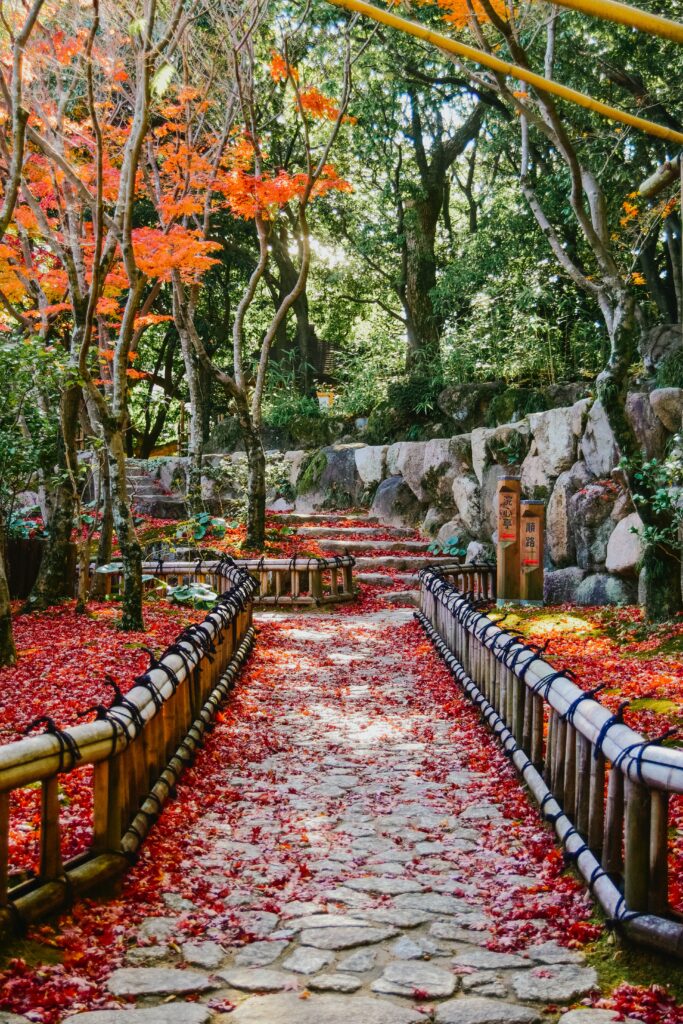
Frequently Asked Questions
What are some must-see gardens in Southern California?
If you're looking to explore some of the most beautiful botanical gardens in Southern California, we recommend visiting the Huntington Botanical Gardens in San Marino, the South Coast Botanic Garden in Palos Verdes, and the San Diego Botanic Garden in Encinitas. These gardens offer a wide range of flora and fauna, from desert landscapes to tropical rainforests.
How can I purchase tickets to visit the California Botanic Garden?
You can purchase tickets to visit the California Botanic Garden in Claremont online through their website. They offer a variety of ticket options, including general admission, student admission, and family admission. Members of the garden receive free admission and discounts on special events.
Are there any guided tours available at botanical gardens in California?
Yes, many botanical gardens in California offer guided tours to visitors. These tours provide a unique opportunity to learn about the plants and wildlife in the gardens from knowledgeable guides. Some gardens, such as the Huntington Botanical Gardens, also offer audio tours that you can listen to on your smartphone.
Can I host a wedding at the California Botanic Garden in Claremont?
Yes, the California Botanic Garden in Claremont offers a beautiful and unique setting for weddings and other special events. They offer a variety of indoor and outdoor event spaces, including a rustic barn and a scenic meadow. To learn more about hosting an event at the garden, visit their website or contact their events team directly.
Which botanical gardens in California are the best for photography?
If you're a photography enthusiast, you might want to check out the South Coast Botanic Garden in Palos Verdes, the Mendocino Coast Botanical Gardens, and the San Francisco Botanical Garden. These gardens offer stunning backdrops for photos, from colorful flower beds to towering redwoods.
What are the unique features of Huntington Botanical Gardens?
The Huntington Botanical Gardens in San Marino is known for its extensive collection of rare and exotic plants from around the world. Some of the unique features of the garden include the Japanese Garden, the Chinese Garden, and the Desert Garden. The garden also features a large collection of art and artifacts, including a Gutenberg Bible and a collection of British portraits.

